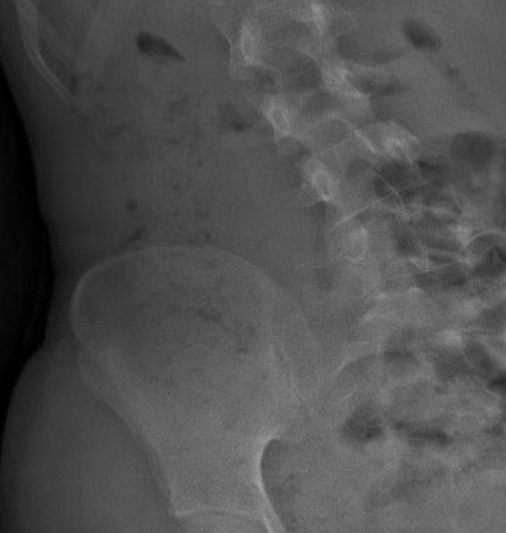Risser 5 is the final Risser sign in this estimation scale which measures skeletal maturity. An x-ray will show complete ossification and fusion of the iliac crest apophysis indicating that an adolescent, or young adult, is fully grown.

For our final feature on Risser sign, we’ll share the story of a local fifteen-year-old girl with severe scoliosis who first came to see us as a Risser 5, more than two years post-menses.
When initially diagnosed (2011), this girl had a 29º Cobb angle. At that time, she treated at a Boston hospital. Her doctor had prescribed the Boston brace which she wore for five years. During that time she progressed to 50º thoracic and 37º lumbar.
After coming for an evaluation with Dr. Marc (Feb 2016), she was measured and fit for a Chêneau brace for part-time wear. When a Risser 5 patient opts for our brace, it is primarily to attempt postural improvement. One month later, an in-brace x-ray showed correction to 35º and 30º (30% and 23% correction). That’s not bad for a Risser 5, and we were happy to see that. This patient also participated in our scoliosis exercise program and incorporated pattern-specific-scoliosis rehabilitation (PSSR) protocols into her daily life for a synergistic effect.

In July 2017, a 24-hours out-of-brace x-ray revealed Cobb angle measurements of 40º and 32º- a 10º Cobb angle improvement in the thoracic spine! When a patient achieves an outcome like this, it’s a reason to celebrate!
There are many who question how a scoliosis brace and scoliosis exercise can help improve posture and in this case Cobb angle. It’s by design. Schroth exercises use 3D Schroth rotational breathing to help derotate the spine. Similarly, a well -designed Chêneau brace has a built-in 3D correction effect. The purpose of this is so that Schroth breathing can happen naturally while the patient wears the brace.
Still, some people wonder how this type of result can happen, especially when many MDs suggest discontinuing brace wear (for girls) at Risser 4. As we mentioned in a previous blog, determining the end point of growth is complex and not at all a perfect science. Risser sign is not a precise measure. There is limited literature suggesting that vertebral growth (albeit minimal) may persist, even beyond Risser 5. Howell et. al reported, “Serial measurements of standing and sitting height of children show that growth continues beyond the age of skeletal maturity when judged by the fusion of the epiphyses of the hand and wrist.” They attribute most of the increase in sitting height to spinal growth. The authors also state that this “may account for the known progression of idiopathic scoliosis beyond the attainment of skeletal maturity” (1). If it is known that there are adolescents that can grow, and progress, beyond skeletal maturity, then perhaps it can be hypothesized that there may be potential for improvement.
On another note, we’ve noticed clinically that improved cognitive maturity is an unforeseen advantage of treating older adolescents (Risser 4 and Risser 5). This isn’t to say that younger adolescents don’t get the big picture when it comes to conservative treatment; most do–we do our very best to make sure of it. However, that level of maturity doesn’t always exist naturally in a ten or eleven-year-old child. Older teens, especially those who have been dealing with scoliosis for a while, have insights that younger children do not.
The girl featured in this post demonstrated that the right brace and scoliosis exercises, rather than the wrong brace, makes a difference! For our patients usually Risser 5 translates to the start of the weaning process. For these patients, if continued scoliosis management is necessary, the focus will shift from bracing to the PSSR protocols which are designed to empower patients for a lifetime.
1) Howell FR, Mahood JK, Dickson RA. Growth beyond skeletal maturity – Spine Phila Pa 1976. 1992 Apr;17(4):437-40.
This blog concludes our Risser Sign Series for Scoliosis Awareness Month! If you’d like to read the previous blogs, link below.

